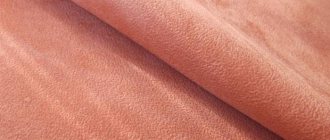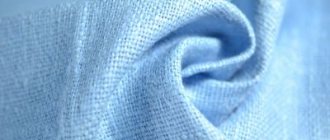Silk clothing looks extremely attractive thanks to the flowing texture of the fabric, shine and color shift. Silk items add grace and nobility to a woman's look.
Natural silk is an expensive material, and the care of clothing made from this fabric should be treated with the utmost care. Wrong choice of detergents, violation of the temperature regime, and instead of a festive outfit you will end up with a nondescript rag, or the item will shrink hopelessly.
Material properties
Silk thread is a waste product of the silkworm. Organic material changes its characteristics when wet - the thread becomes fragile. Products made from natural silk are not resistant to aggressive environments, primarily chlorine, which irreversibly damages fabric fibers and “eats” the dye.
The peculiarities of the weave of the threads, due to which the fabric has a shiny iridescent surface, complicate the care of things. Contact of water or other liquids with the material leads to the formation of stains and streaks that are difficult to remove without washing.
Silk is dried and ironed according to certain rules, violation of which leads to severe shrinkage of the fabric - the item loses its shape. Washing can only be done by hand; the delicate mode of an automatic washing machine is only suitable for items made of artificial silk.
Drying is a delicate matter
Silk should not be treated the same way as other fabrics after washing. Firstly, forget about exposure to heat sources and drying in the sun, and secondly, do not hang the product on a line or dryer. If you ignore these rules, the color will fade and the shape will change.
To quickly dry silk, take a clean towel, lay it on a horizontal surface and lay the fabric down. Excess moisture will remain on the terry. The second drying option is on hangers in a vertical position. Thin natural material becomes dry quite quickly, don’t let this happen! After complete drying, problems will arise during ironing; it is very difficult to smooth out creases and irregularities.
Useful: sometimes after a visual assessment of the silk it turns out that the product needs to be hemmed. You can do this yourself using the finest bead needle and natural threads No. 65. Do the work very carefully so as not to damage the delicate fabric.
Proper care
If you properly care for silk, your items will delight you with their attractive appearance for many years. Note:
- Natural silk has a bactericidal effect - the material does not promote the growth of germs and bacteria, so things can be washed less often than clothes made from other materials. It is important to ventilate silk clothes well.
- Table salt helps add shine to the fabric. Simply rinse the washed item in a solution, the preparation of which requires 200 grams of salt and 10 liters of warm, clean water.
- Difficult stains should not be washed separately - this will lead to unsightly stains on the item that cannot be removed without rinsing the entire item in water.
To remove the stain, use the appropriate method, choosing from the options provided. Before cleaning the product, check on an inconspicuous area of the fabric to see if the prepared composition will not damage the color and structure of the material.
- Prepare a cleaning paste from potato or corn starch with the addition of a small amount of water. Apply the paste to the stain and wait until it dries completely. Then the composition is removed using a soft brush or brush.
- Before washing the product, treat the stain with an aspirin solution - two tablets of this medicine are required for half a glass of warm water.
- Remove tea or coffee stains using a foam sponge lightly moistened with glycerin.
- Diluted ammonia will help rid silk wardrobe items of sweat stains.
In difficult cases, it is recommended not to clean or wash the silk yourself, but to take the items to the dry cleaner.
Basic rules for ironing silk
Ironing silk clothes must be approached with particular scrupulousness and accuracy. Set the iron to the lowest temperature. If your household appliance has a special “Silk” mode, be sure to turn it on.
Please keep in mind a few important rules:
- ironing can only be done from the inside through damp gauze;
- clothes should not be wet;
- It is not recommended to use steam.
The fabric may be slightly damp. This will help prevent it from drying out when ironing. Otherwise, it will become stiff, and in the future it will be much more difficult to get rid of folds.
In order to properly iron a silk dress, you must proceed as follows:
- give the product a horizontal position;
- cover it with gauze on top;
- turn on the steaming mode;
- steam at a distance of 5–6 cm from the product.
If you need to iron the shirt, repeat the same steps. But first hang the item on hangers and leave it in the bathroom for a while. Open the hot water to prevent splashes from getting on the product. Leave the shirt on for 5-10 minutes. Thus, steam will fill the bathroom and cover all the necessary places on the product. Now you can start ironing.
Washing principles
The question of how to wash silk items worries many housewives who are afraid of ruining expensive clothes made from natural material. Let's look at how to wash natural silk, protecting the fabric from negative consequences.
Handwash
Products made from silk fabric are washed mainly by hand - in this case there is less risk of damaging the material. This also applies to products that have a machine washable symbol on the label. You can find the decoding of the designation at the link.
To wash silk, use warm water with a suitable detergent dissolved in it. You should not soak the item for a long time - a few minutes is enough. The fabric is prohibited from rubbing, brushing, squeezing, or rubbing with a bar of soap. The movements should be light, as when rinsing things.
Using an automatic machine
In a washing machine, even when programmed on a delicate cycle, the material is subjected to mechanical stress. This can destroy the structure of the fabric, since its fibers become brittle when wet.
If you nevertheless decide to wash a silk blanket or wardrobe items in a machine, since there is a corresponding sign on the labels, you should select the “Silk” mode, and in its absence, “Hand Wash”.
Due to the use of an increased volume of water in these modes, laundry detergents are better washed out of the fabric, and unsightly stains will not appear after drying. The drum rotation speed is also reduced, which reduces the risk of mechanical damage to the fabric. It is recommended to use the “Drain water” option to avoid spinning the product. In extreme cases, spinning at low speeds is allowed.
If you are unsure whether a particular silk item can be machine washed, it is better to play it safe and wash it by hand. It is allowed to place products that are similar in color into the drum of the automatic machine to avoid the appearance of faded spots. To protect silk clothes or linen from deformation, wash items in a special net.
High cost of error
Every housewife needs to know how to remove stains from silk or simply refresh something made from this material. A product in the closet made of noble, delicate fabric is an undeniable luxury. It was not for nothing that in the Roman Empire silk fabrics were valued as a precious metal. They were used to pay for large quantities of high-quality goods; only wealthy noble people could buy them.
Today, natural silk looks even more beautiful than before. The basis for production, as before, is the products secreted by silkworm caterpillars when curling cocoons. The thread turns out incredibly strong and elastic. It is called the most wear-resistant of all natural ones. However, when describing silk, it is better not to talk about durability; it requires special delicate care, and things should be worn carefully. Only under such conditions will the fabric last a long time without losing its original appearance.
Silk - how not to care:
- wash at high temperatures;
- use bleaches and other aggressive compounds;
- crush, rub and squeeze hard;
- dry using clothespins.
Restoring material after damage will not be easy, and sometimes impossible. It is better to take into account all further recommendations, otherwise the fibers will be irrevocably deformed.
Selecting detergents
When figuring out how to wash natural silk, pay special attention to the choice of detergents. Allowed to use:
- special products for delicate washing with a mild action, preferably liquid or in gel form;
- clear toilet soap, baby soap;
- shampoo without coloring effect.
It is prohibited to use:
- bleaches, primarily chlorine-based;
- washing powders with biologically active additives - they break down protein, and natural silk is a protein substance;
- laundry soap - high alkali content harms natural fiber.
Rule 5: Store correctly
Store silk clothing in complete darkness. If you need to leave things for a long time, use covers made of natural material. A cotton option would also be an excellent solution. Silk items cannot be stored in plastic, cellophane and other synthetic bags, as they help retain moisture. High humidity contributes to yellowing of the fabric, and in worst cases, even the formation of mold.
Moths really like silk clothes, so your closets must have special preparations against these insects.
By following these simple rules, you will keep your silk clothes in perfect condition and will be able to wear them for a very long time. At the same time, your stunning appearance will not go unnoticed.
Water parameters
It is important to know at what temperature natural silk is washed. The water used is slightly warm, approximately human body temperature. It is better to limit the heating in the machine to 30 degrees.
Be sure to keep an eye on the softness of the water. If it contains a lot of dissolved salts:
- when machine washing, add softener tablets;
- When washing by hand, use boiled water or add 10 grams of soda or ammonia to a container with 10 liters of water.
Rule 3: Dry
Remember! Drying with artificial heating (thermal) is strictly prohibited. Wrap the silk outfit in a towel and gently squeeze out the water. Let your clothes dry naturally in a well-ventilated room or balcony, but when hanging them, make sure they are not exposed to direct sunlight.
At the same time, silk products should be removed from drying slightly damp, since the material cannot be overdried. If it is overdried, it cannot be smoothed out, and the use of spray bottles can leave streaks on the fabric.
Color fastness test
Place the piece of silk on a clean towel.
Mix a drop of mild laundry detergent and room temperature water in a cup.
Apply the mixture with a cotton swab to the hidden seam.
- Caring for viscose: how to wash, dry and iron it
If the paint comes off, this item will be dry clean only. This step is especially important for bright colors.











